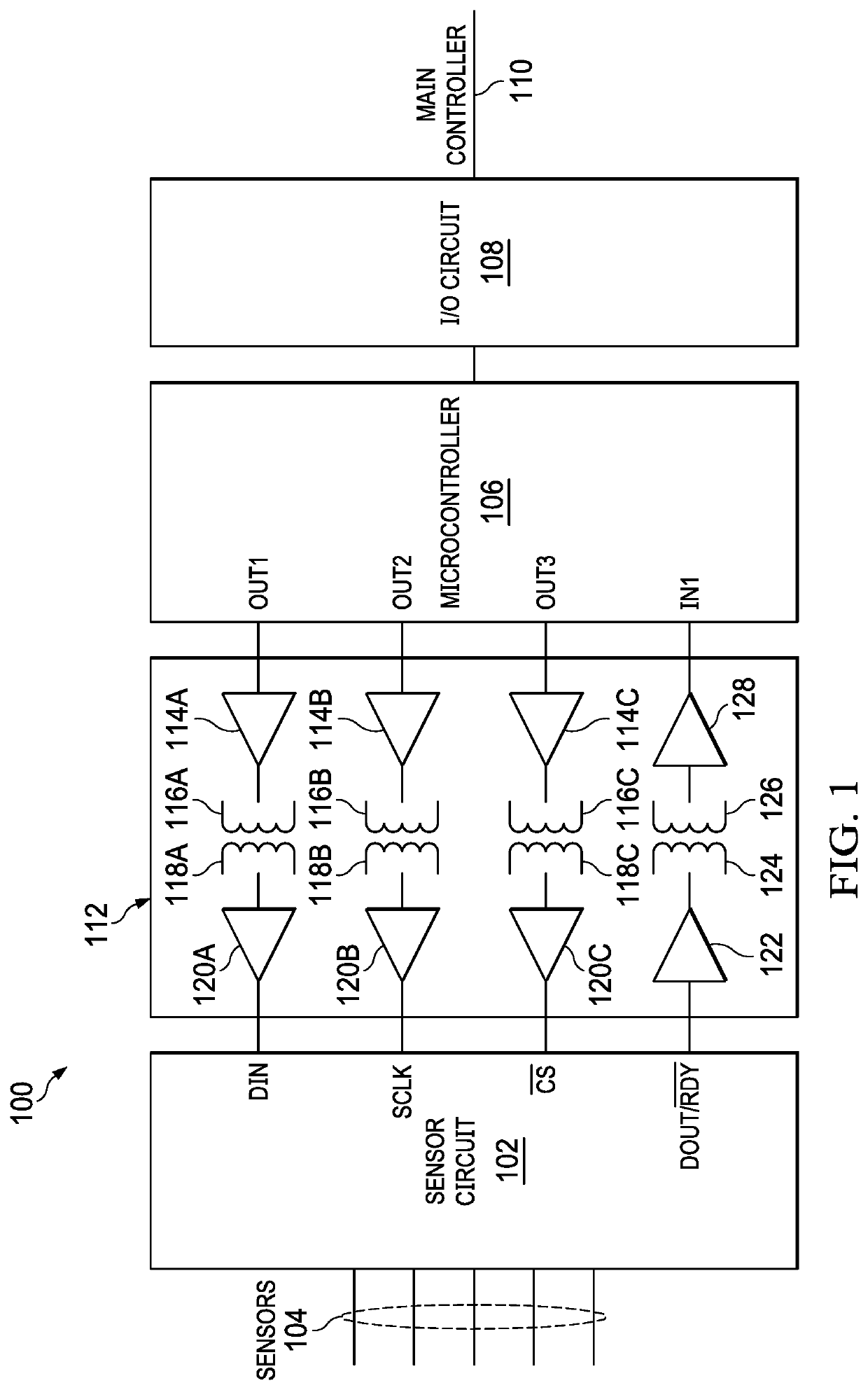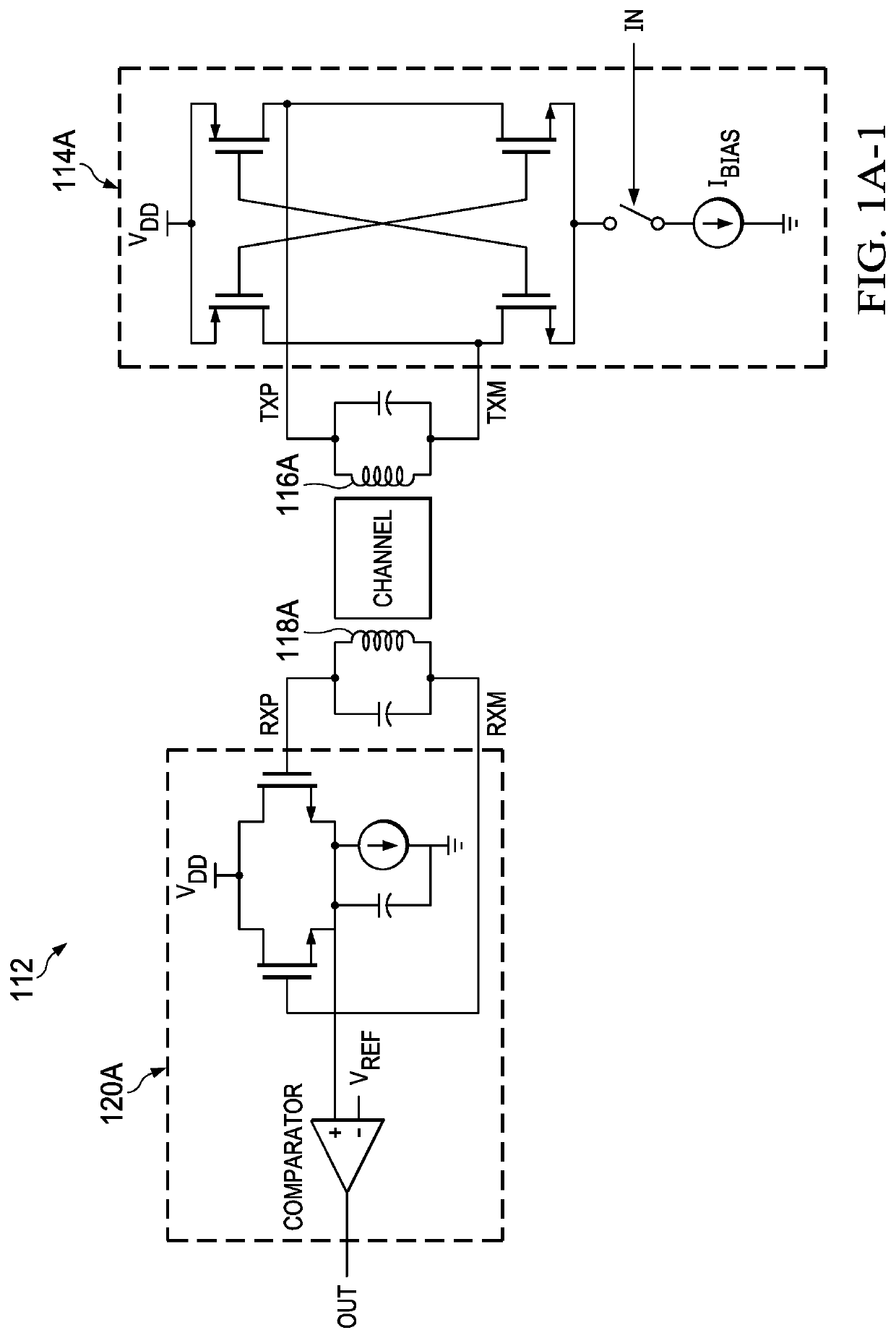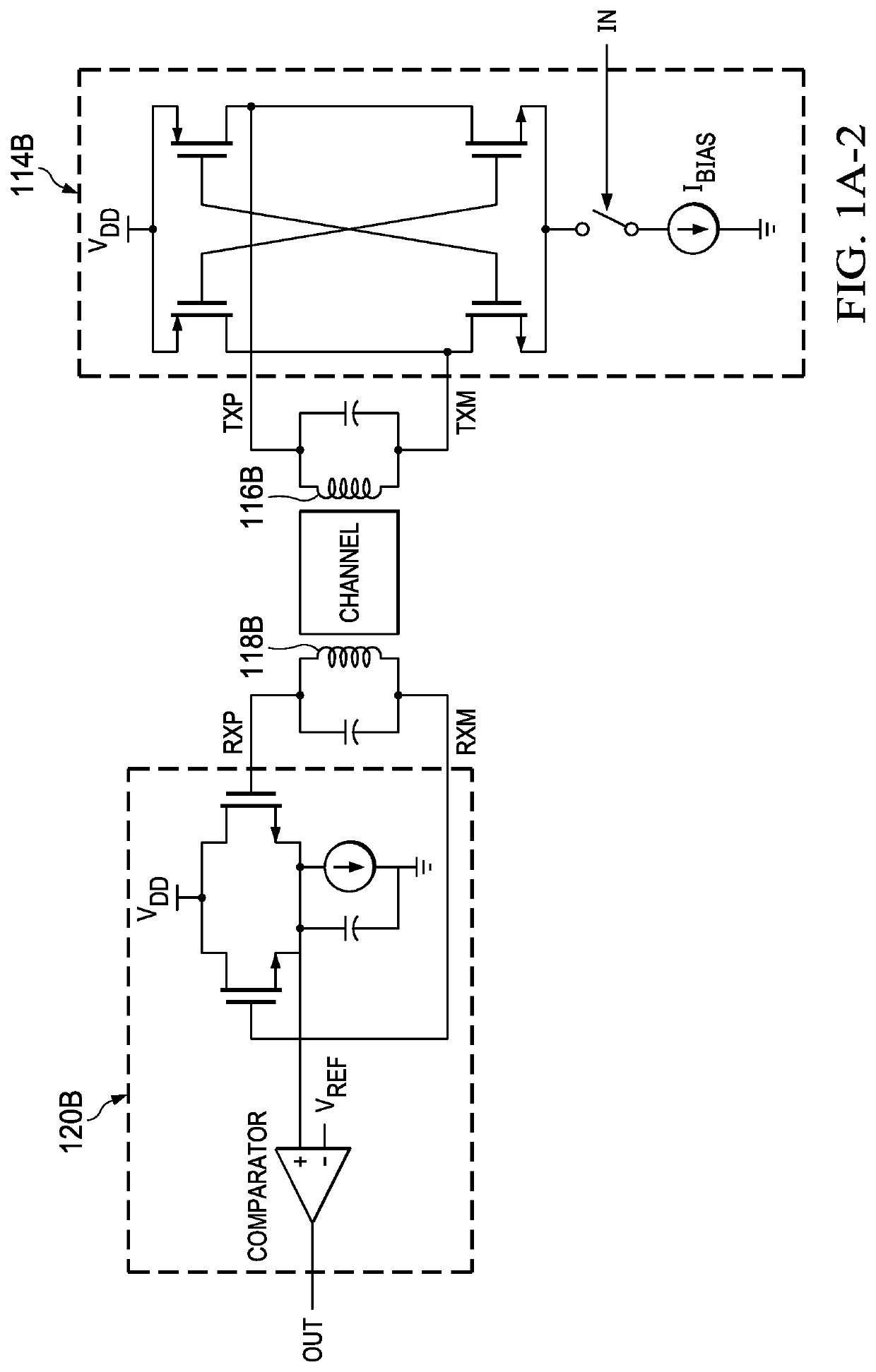Crosstalk reduction in receiver inductive loop using capturing loop in transmitting inductive loop
a technology of inductive loop and capture loop, applied in the field of digital isolators, can solve the problems of insufficient capacitive isolation digital isolators, and insufficient in many instances of capacitive isolation lower power levels, and achieve the effect of reducing crosstalk and making production more cost effectiv
- Summary
- Abstract
- Description
- Claims
- Application Information
AI Technical Summary
Benefits of technology
Problems solved by technology
Method used
Image
Examples
Embodiment Construction
[0019]Referring now to FIG. 1, an example use of a digital isolator is provided. A sensor module 100 includes a sensor circuit 102 which is connected to various sensors 104 that are being monitored. A microcontroller 106 provides the intelligence for the sensor module 100. An input / output (I / O) circuit 108 is connected to the microcontroller 106 and to a main controller 110 to provide the sensor readings to the main control system. The sensor circuit 102 and the microcontroller 106 are connected by a digital isolator 112. The digital isolator 112 is a four channel device with three channels being connected to transfer data from the microcontroller 106 to the sensor circuit 102 and one channel connected to transfer data from the sensor circuit 102 to the microcontroller 106. The digital isolator 112 is an inductive isolation device which uses inductive loops to transfer the signal across the isolation barrier. Receiver circuitry 114A receives the output signal from the OUT1 output of...
PUM
 Login to View More
Login to View More Abstract
Description
Claims
Application Information
 Login to View More
Login to View More - R&D
- Intellectual Property
- Life Sciences
- Materials
- Tech Scout
- Unparalleled Data Quality
- Higher Quality Content
- 60% Fewer Hallucinations
Browse by: Latest US Patents, China's latest patents, Technical Efficacy Thesaurus, Application Domain, Technology Topic, Popular Technical Reports.
© 2025 PatSnap. All rights reserved.Legal|Privacy policy|Modern Slavery Act Transparency Statement|Sitemap|About US| Contact US: help@patsnap.com



